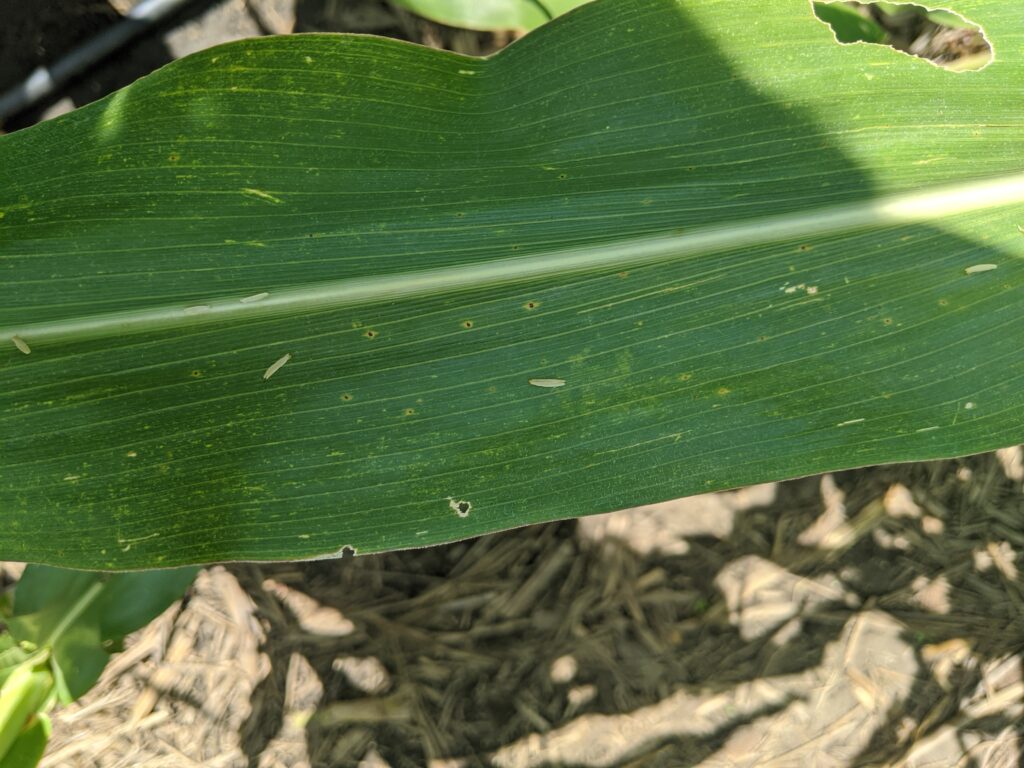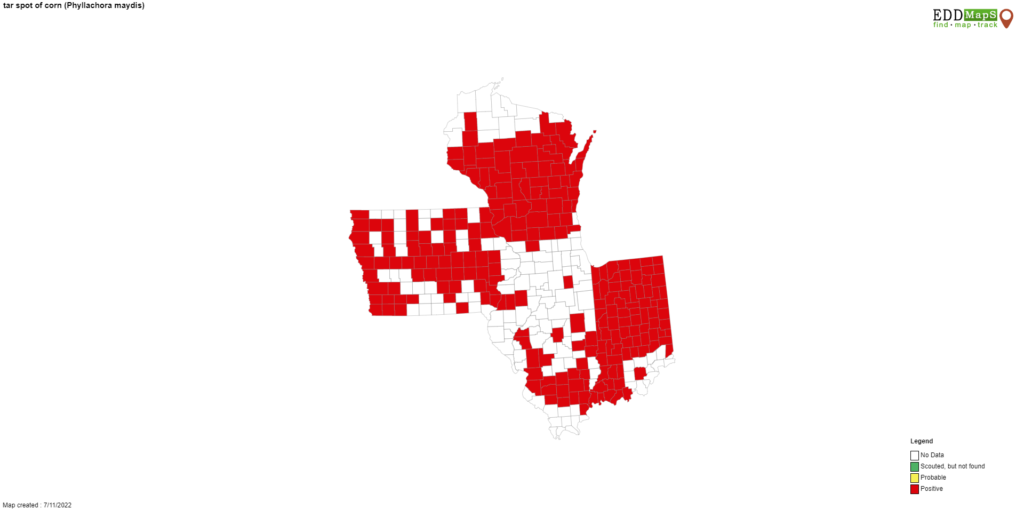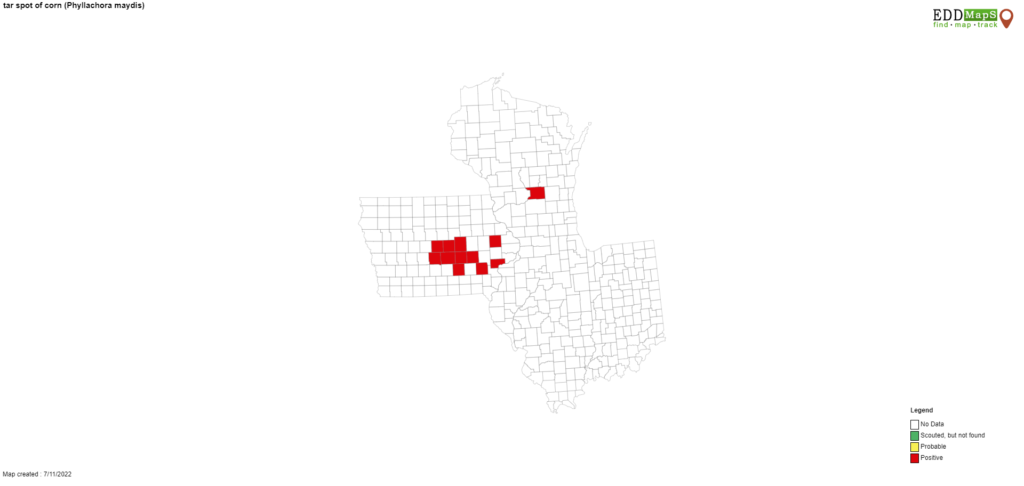Corn Tar Spot Disease Monitoring in Illinois
Tar spot on corn is here to stay in Illinois. Given that the pathogen that causes tar spot on corn can overwinter in infected residue, once the pathogen is in a field, it is more likely to be problematic in that field in the future. If you’ve been a victim of high incidence and/or severity of corn tar spot in your fields, you know how limiting this disease can be on corn yield.


As this disease can be seriously yield-limiting AND the pathogen is relatively new yet in Illinois, we have been monitoring the spread of this pathogen through corn IPMPipe. However, tar spot is different from other major diseases that we monitor through IPMPipe. For example, corn Southern rust and soybean rust only develop in Illinois if and or when the spores of the fungi that cause these diseases are spread north via winds throughout the growing season, because the fungi do not overwinter in crop residue in Illinois. So how is tracking and monitoring corn tar spot different?
Well, I was asked to take care of fielding the reports of different crop pathogens through IPMPipe once our state field crops pathology Extension specialist left the University of Illinois. As a plant pathologist not only by training (Ph.D. in Plant Pathology & Microbiology from Iowa State University in 2019) and at heart, but I was also the logical person to fill this void in our state until we get a new state-level field crops pathologist. When I inherited this responsibility, I had a bit of a conundrum to navigate.
In Illinois in the past, updating tar spot reports on the map was limited to new county reports where the disease had not been previously sighted. The logic behind this was that “if you’re in a county that already has a report of tar spot, you should know that you’re chances of getting it are already pretty likely.” Think back to the difference between a disease like tar spot and southern rust. However, when I asked other field crops pathologists in the Midwest how they handle reporting, they told me that they will light a county up to reflect a present incidence of the disease regardless of past reporting, i.e., if tar spot has been reported in your county in past years and you happen to find tar spot stroma sometime during the current growing season, conditions are favorable for disease development.


It is honestly a fine line to tow. I understand and appreciate the logic of both styles of handing disease reports.
So now, I want to you to know how I am approaching the reporting in Illinois so you can understand the current map and submit reports as you see tar spot incidence in the fields you are scouting. I am moving forward with the latter of the two approaches to tar spot reporting in Illinois. This does, however, mean that just because a county is not highlighted yellow for a current year does not necessarily mean that there is no tar spot incidence in that field this growing season. All it means is that disease has not been reported. I will be released reports as I get them, so you may see some grey counties (counties with a history of tar spot) go yellow.

But as I am one person, I rely heavily on others out in the field throughout Illinois for accurate and up-to-date reporting. How can you help? If you happen upon tar spot in a corn field you are scouting, take a picture of the symptoms/signs you are seeing and submit a report through either corn ipmPIPE or ag pest monitor. I will review the reports as I receive them. Photos are helpful for me to confirm or deny tar spot. However, one of the quickest and easiest things you can do before you even take a picture is to do the ole thumbnail test- use your thumbnail or fingernail to gently scrape at the suspected stromata. A tar spot stroma will not be affected or move when gently scraped or scratched with your fingernail, while lookalikes such as insect frass or dirt will be moved away. If the spot your scratch isn’t affected, take a picture, note the location, and submit a report.
Any questions on tar spot reporting, please do not hesitate to reach out to me (harbach2@illinois.edu). Happy scouting!





